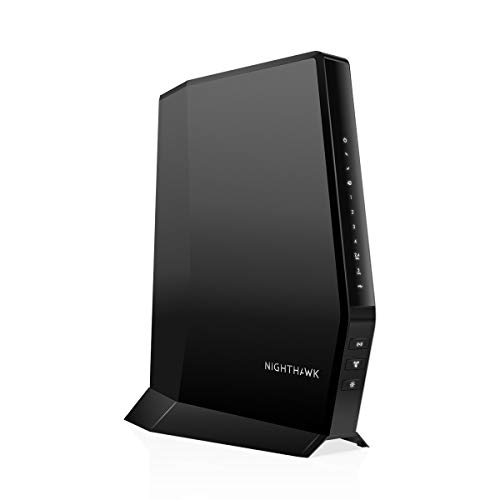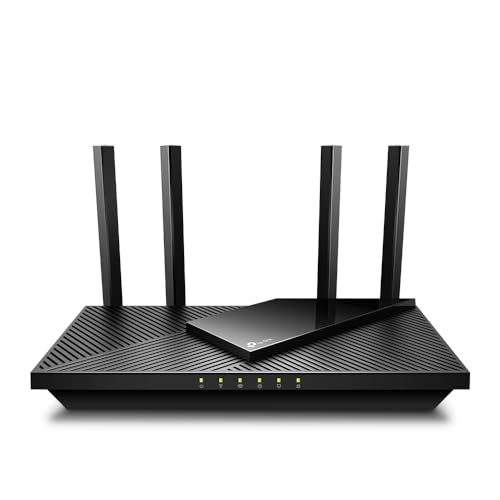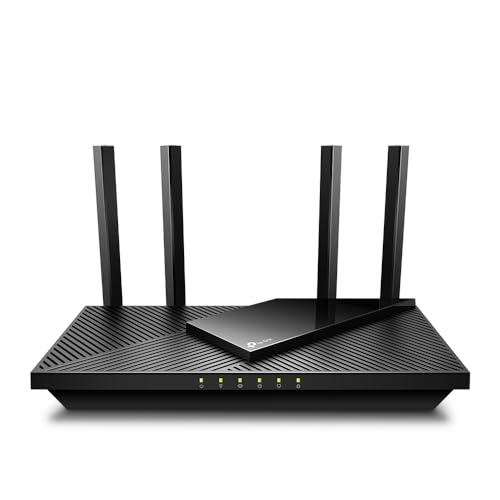
How to Connect Your WiFi Modem to Another WiFi Router: A Step-by-Step Guide
Recommended Product:
Want to extend your WiFi network’s reach or improve its performance? Connecting your WiFi modem to another WiFi router, often called a secondary router or access point, is a great solution. This process, while seemingly complex, is fairly straightforward when you follow the right steps. This guide will walk you through it, highlighting crucial points and common pitfalls to avoid.
Why Connect a Modem to a Router?
Before diving into the instructions, let’s understand why you might need to do this. The most common reasons include:
- Extending WiFi range: Your modem’s WiFi signal might not reach all corners of your home or office. A second router can significantly boost coverage.
- Improving WiFi performance: A single router can become overloaded, especially in households with many devices. Adding a second router can distribute the load, improving speed and stability.
- Creating a separate guest network: This offers enhanced security and privacy.
- Using different WiFi bands: You can have one router broadcasting on the 2.4GHz band and another on the 5GHz band, optimizing device performance.
Step-by-Step Guide: Connecting Your WiFi Modem to Another WiFi Router
This guide assumes you have both your existing modem and a new WiFi router. Make sure both devices are powered off before beginning.
Step 1: Connect the Modem to the Router (Wired Connection)
This is the most crucial step. You’ll need an Ethernet cable.
- Locate the Ethernet ports: Your modem will have an Ethernet port labeled “LAN” or similar. Your new router will have an Ethernet port labeled “WAN” or “Internet,” “Upstream,” or a similar designation. Do not plug into a LAN port on your router.
- Connect the cables: Connect one end of the Ethernet cable to the “LAN” port on your modem and the other end to the “WAN” port on your new router.
Recommended Product:
Step 2: Power on Your Devices
- Power on the modem first. Allow it a minute or two to fully initialize.
- Power on the new router. It may take a few minutes to boot up and establish a connection.
Step 3: Configure Your Secondary Router
This step involves accessing your router’s settings and configuring it to work correctly with your modem.
- Find your router’s IP address: This is usually printed on a sticker on the router itself. It may be something like 192.168.1.1 or 192.168.0.1. Consult your router’s manual if you can’t find it.
- Access the router’s settings: Open your web browser and type the IP address into the address bar. You’ll be prompted to log in. Use the default username and password provided in your router’s documentation. These are usually “admin” for both.
- Configure the router: The exact steps vary depending on your router’s make and model, but you’ll generally need to:
- Choose a different WiFi network name (SSID): Avoid the same name as your modem’s network to avoid confusion.
- Set a strong WiFi password: This protects your network from unauthorized access.
- Disable DHCP: This prevents IP address conflicts. Your primary router’s DHCP should handle IP address assignments. (This is crucial, and often overlooked).
- Choose a different WiFi channel: Selecting a less congested channel can improve performance. Many routers offer automatic channel selection.
- Save your settings: Once you’ve made the changes, save them to apply the configurations.
Step 4: Connect to Your New WiFi Network
Once the router is configured, you should be able to see your new WiFi network (SSID) in your device’s available WiFi networks. Connect using the password you set.
Common Mistakes to Avoid:
- Connecting to the wrong port: Ensure you connect the modem to the WAN port, not a LAN port, on the secondary router.
- Forgetting to disable DHCP on the secondary router: This leads to IP address conflicts and network instability.
- Using the same SSID and password: This creates confusion and security vulnerabilities.
- Not saving your router settings: Your changes won’t take effect unless you save them.
Tips for Optimal Performance:
- Place your routers strategically: Ensure good signal overlap between your primary and secondary routers for seamless handoff.
- Use wired connections whenever possible: Wired connections are generally faster and more stable than WiFi.
- Monitor your network performance: Regularly check your network’s speed and stability to identify and resolve potential issues.
By following these steps and avoiding common mistakes, you’ll successfully connect your WiFi modem to another WiFi router, expanding your network coverage and optimizing performance. Remember to always consult your router’s manual for detailed instructions specific to your device.
Recommended Product:
FAQ
Q. Why would I want to connect my WiFi modem to another WiFi router?
A. You might connect your WiFi modem to another WiFi router to extend your WiFi coverage, create a guest network, improve your WiFi signal strength, or use advanced router features not available in your modem/router combo unit. Using a separate, more powerful router often improves performance, especially in larger homes or those with many devices.
Q. What type of connection should I use to connect my modem to the router – Ethernet or WiFi?
A. It’s strongly recommended to use an Ethernet cable for the connection between your modem and router. This provides a significantly more stable and faster connection than WiFi. While connecting via WiFi is possible, it introduces extra points of potential failure and may reduce overall speeds.
Q. My modem only has one Ethernet port. What should I do?
A. If your modem only has one Ethernet port, you can only connect one device directly. You’ll need to connect your router to that single port. If you require more Ethernet ports, you’ll need a router with multiple LAN ports. Consider a router with additional Ethernet ports to accommodate all of your devices.
Q. What settings do I need to configure on my router after connecting it to the modem?
A. After connecting your router to your modem via Ethernet, you’ll need to access your router’s administration interface (usually by typing an address like 192.168.1.1 or 192.168.0.1 into your web browser). You will need to: 1) Set up a new WiFi network name (SSID) and password, different from your modem’s. 2) Choose a different WiFi channel to avoid interference. 3) Possibly configure the router’s DHCP settings (though often this is automatic). Consult your router’s manual for specific instructions, as these steps vary by manufacturer and router model.
Q. My internet isn’t working after connecting my router to the modem. What should I check?
A. First, verify the physical connection between the modem and router is secure. Check that the Ethernet cable is properly plugged into both devices. Next, power cycle both your modem and router (unplug them, wait 30 seconds, and plug them back in). Then, check the router’s configuration to make sure your internet connection is properly configured. Ensure that your router is obtaining an IP address from your modem via DHCP (usually the default setting). Finally, check your modem’s status lights to see if it indicates any problems. If you’re still having trouble, contact your internet service provider (ISP) for support.
Q. Can I use a powerline adapter instead of an Ethernet cable to connect my modem and router?
A. Yes, you can use a powerline adapter to connect your modem and router if an Ethernet cable is not feasible. However, remember that powerline adapters rely on your home’s electrical wiring, and their performance can be affected by factors such as wiring quality and electrical interference. While it’s a possible alternative, an Ethernet cable generally provides better and more reliable performance.
Related Articles
How Can I Boost My Spectrum Wifi Signal
How Can I Boost My Spectrum Wifi Signal? A Step-by-Step Guide Recommended Product: Mini Cell Signal Booster for Verizon, AT&T, T-Mobile| Up to 150…
Can You Use A Dstv Dish For Internet
Can You Use Your DStv Dish for Internet? Unlocking the Potential of Your Satellite Dish Recommended Product: Dish Network 1000.2 Dish 110, 119, 129 Sa…
What is the Best WiFi Router for Streaming
Streaming is basically a way of live now, right? Whether you’re glued to a 4K movie marathon, hopping on a video call, or battling it out in an online…



Leave a Reply
You must be logged in to post a comment.